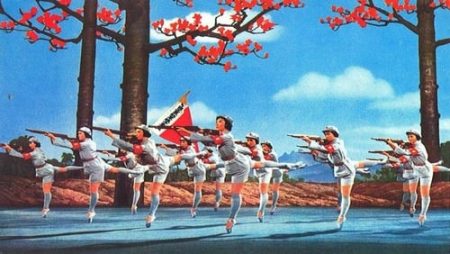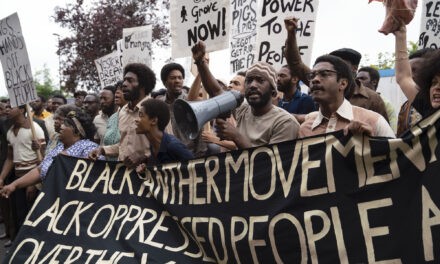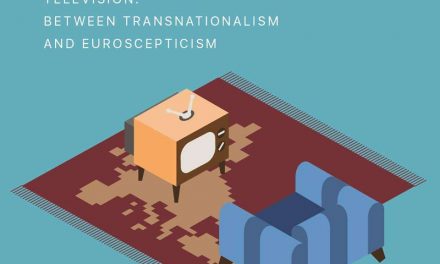The Politics of Colour Media
Issue 17, Summer 2020
Guest Editor: Dr Kirsty Sinclair Dootson
Co-Editors-in-Chief: Ana Maria Sapountzi & Peize Li
Book Review Editor: Patrick Adamson
Although colour has historically been trivialised as superficial, feminine, cosmetic, and decorative, the 17th issue of Frames Cinema Journal, guest edited by Dr Kirsty Sinclair Dootson, interrogates and celebrates colour as a potent political force. Colour media around the globe, chief amongst them film and television, have established, reinvented, progressed, and aestheticised national, political, social, and cultural profiles, evolving an ideological currency alongside their aesthetic values. This issue of Frames therefore examines the political power of colour media by simultaneously gazing at these intersecting ideological, technical, and aesthetic histories. Precisely because colour does not comprise a single technology or set of visual practices, but a host of interlocking apparatuses and contingent aesthetic principles, we invite submissions that attend to any aspect of chromatic media from around the world.
From the analogue histories of colour in the studio and laboratory, to the practicalities of chromatic coding and programming in the digital era, from the aesthetic issues of colour in experimental media practice, to its value for state-sponsored propaganda, and from issues of national progress and transnational relationships, to colour’s role in forging oppositional subject-positions and identities, we are eager to hear from contributors working on original research involving previously unexamined chromatic media, particularly in relation to contexts outside Western Europe and America.
Topics may include, but are certainly not limited to:
- Colour, governmental politics, and political regimes
- Colour and colonialism/post-colonialism
- Colour and national/transnational cinemas
- Colour and the politics and ethics of restoration, preservation and archiving
- Colour and labour
- Colour and avant-garde/experimental film
- Colour and issues of modernity/post-modernity
- Colour, materiality and material culture
- Colour and digital technologies
- Colour and acts of political subversion
- Colour and animation
- Colour and the politics of identity (gender, sexuality, race)
- Colour, the sensorium and affect
- Colour media beyond film: television, video, and gaming
Notes for Contributors:
Proposal abstracts should be no more than 250 words and must be accompanied by an indicative bibliography. A brief third-person bio of approx. 150 words should be provided along with the abstract.
Abstracts should be sent through as Word Documents and titled “Frames Issue 17 Author First name Author Surname” (e.g. Frames Issue 17 Natalie Kalmus).
Please submit your proposal to Ana Maria Sapountzi and Peize Li at framesjournal@gmail.com.
Frames accepts a variety of written pieces for submission, such as:
- Feature Articles, which are research essays that engage in theoretical, practical, pedagogical, and/or historical analysis of the visual narrative in film or related digital media. Feature Articles are typically between 5,000-7,000 words in length, inclusive of footnotes, but exclusive of the bibliography.
- Point-of-View (POV) Featurettes, which are shorter research essays which seek to examine or express a specific critique about a theme in a more succinct fashion. Point-of-View (POV) Featurettes are typically between 1,000-3,000 words in length, inclusive of footnotes, but exclusive of the bibliography.
- Film Featurettes, which are shorter research essays, discuss and review one film in detail. Film Featurettes are typically between 1,000-3,000 words in length, inclusive of footnotes, but exclusive of the bibliography.
- (New section!) Scene Reviews, which are shorter research essays, investigate and review one scene in detail. Scene Reviews are typically between 1,000-2,000 words in length, inclusive of footnotes, but exclusive of the bibliography.
- Book Reviews, which are essays that provide a scholarly critique of the latest texts in the field. The text choice may range from the theoretical and the practical to the pedagogical and the historical. Book Reviews are typically 1,000-1,500 words in length, inclusive of footnotes, but exclusive of the bibliography. If you would like to publish a book review, please contact our Book Review Editor, Patrick Adamson, at pa41@st-andrews.ac.uk.
Frames also accepts video essay submissions:
- Video essays can be of varying length and should be discussed with the editors on a case-by-case basis. Video essay submissions must be sent to the editors in the form of a link using an online platform (Vimeo, YouTube, etc.).
All submissions to Frames should not be under consideration elsewhere, and should be original and previously unpublished.
Please refer to our Submissions page for more details.
Timetable for Issue 17:
Abstract Proposal Deadline: 28/02/2020
Abstract Decision Announcement: 09/03/2020
First Draft Deadline: 27/04/2020
Editorial Review: 27/04/2020-10/05/2020
Final Copy Deadline: 08/06/2020
Intended Publication Week: 22/06/2020
Abstracts are to be submitted no later than Friday, February 28, 2020, as they will not be considered after that. Authors should expect to be notified of the editorial committee’s decision by Monday, March 9, 2020.
If you have any questions, do not hesitate to contact us at framesjournal@gmail.com
Ana Maria Sapountzi and Peize Li
Co-Editors-in-Chief
Email: framesjournal@gmail.com
Twitter: @FramesJournal







